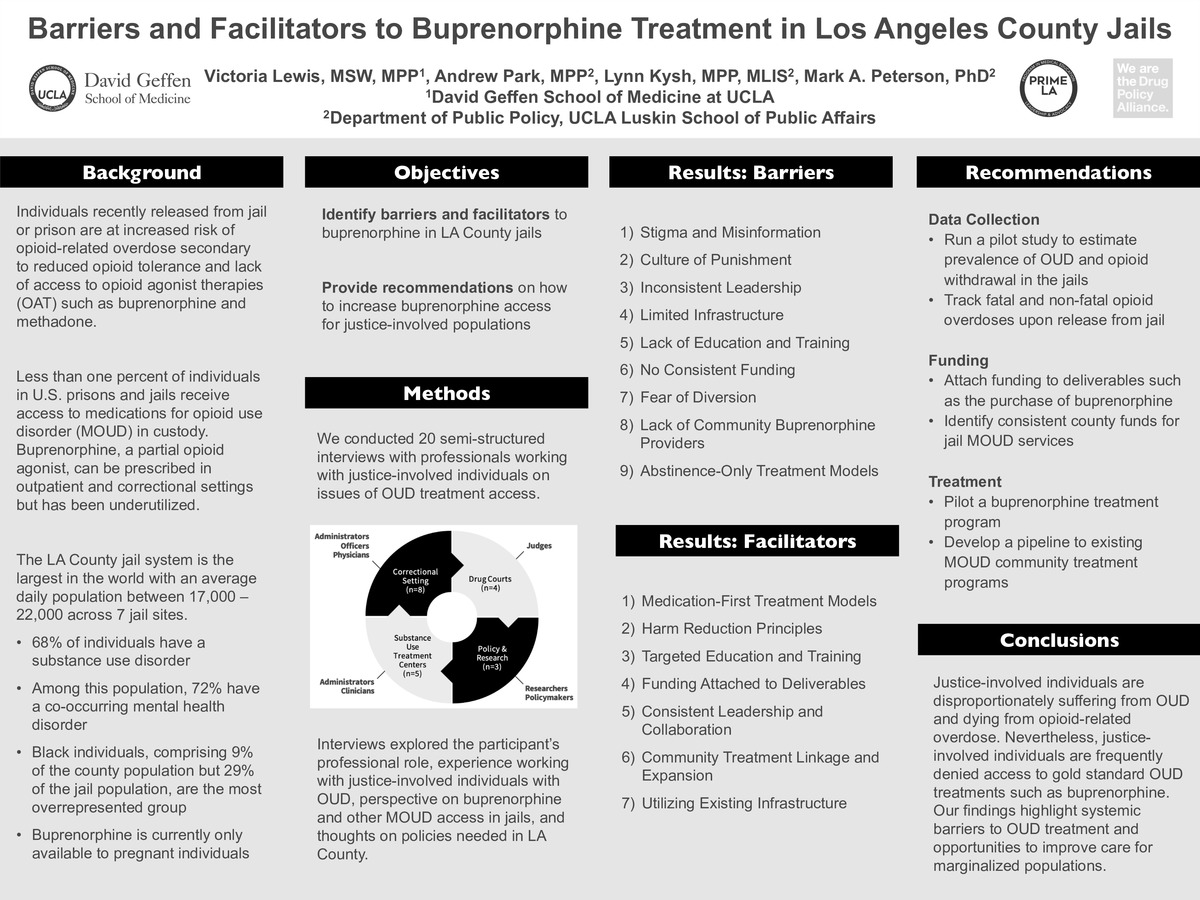-
Author
Victoria Lewis -
Co-author
Andrew Park, MPP, Lynn Kysh, MPP, MLIS, Mark A. Peterson, PhD
-
Title
Barriers and Facilitators to Buprenorphine Treatment in Los Angeles County Jails
-
Abstract
Background: Individuals in prisons and jails with opioid use disorder are disproportionately at risk of dying from an opioid overdose upon release secondary to decreased opioid tolerance following a period of forced withdrawal. Although opioid agonist maintenance treatment with methadone and buprenorphine are gold standard treatments for opioid use disorder, less than one percent of jails and prisons in the United States provide access to these medications. Buprenorphine has been shown to be underutilized in community and correctional treatment settings despite legislation that intended to make the medication more accessible. The Los Angeles County jail system, the largest in the nation, currently only offers buprenorphine treatment to pregnant individuals. This study will explore the barriers and facilitators to buprenorphine treatment in Los Angeles County jails.
Methods: We conducted 20 semi-structured interviews with professionals who work directly with justice-involved individuals with opioid use disorder in Los Angeles or who have influence on policies related to buprenorphine treatment in the Los Angeles County jail system. We then performed thematic analysis to identify major barriers, facilitators, and recommendations for how to increase access to buprenorphine treatment in Los Angeles County jails.
Results: Our participants identified multiple barriers to buprenorphine treatment access, including stigma, misinformation, insufficient funding, limited community treatment availability, and a culture of punishment. Facilitators included treatment protocols, incentivizing stakeholder education, medication-first treatment approaches, and harm reduction principles. Correctional health professionals provided their recommendations for how the Los Angeles County jail system can overcome the identified barriers to buprenorphine and increase access for justice-involved individuals.
Conclusion: Our findings suggest a need for increased collaboration among Los Angeles County jail leadership, substance use treatment agencies, physicians, public health officials, and policy makers to address identified organizational, local, state, and national barriers to buprenorphine treatment and to ensure that justice-involved individuals have access to standard of care treatments for opioid use disorder.
-
College
PCC
-
Zoom
-
PDF

